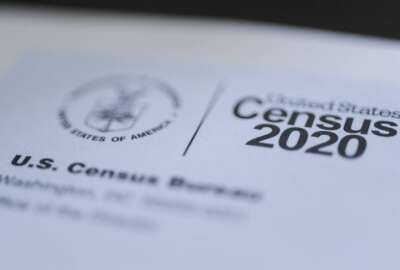Hubbard Radio Washington DC, LLC. All rights reserved. This website is not intended for users located within the European Economic Area.
On Air: Federal News Network
Trending:
As a federal pioneer of LEED, NOAA grasps savings
From the soon-to-be renovated headquarters of the General Services Administration, to the green roof of the main New York City Post Office, the federal governme...
By Max Cacas
Reporter
Federal News Radio
In June 2007, the National Oceanic and Atmospheric Administration’s Satellite Operations Facility on the campus of the Suitland Federal Center in Suitland, Md. did something few other federal building had ever done.
NOAA’s building earned a highly-sought after rating, called the Leadership in Energy and Environmental Design (LEED).
“It was one of the first buildings to achieve a Gold certification from the U.S. Green Buildings Council,” said Paul Pegnato, facilities lead for the building in an interview with Federal News Radio. “The General Services Administration, as many of us in the facilities industry know, is the largest landlord for the U.S. government. They’ve taken a leadership position in requiring that all new federally constructed buildings have a minimum of a Silver rating with the Green Buildings Council.”
There are many factors contributing to the NOAA facility’s LEED Gold rating, but to fully appreciate them, Pegnato said you first have to understand the role this building plays in formulating your daily weather forecast.
He explained that this facility has direct control over the constellation of weather satellites, many of them in orbits of as much as 22,000 miles over the earth and track weather systems all over the globe.
Computer systems at the NOAA facility gather data from those satellites and turn them into maps and atmospheric charts used by the National Weather Service, private forecasting companies and the Pentagon to forecast the weather.
Part of the reason for the NOAA facility’s LEED Gold rating can be traced to the way it was designed, said Tony Alonso, chief architect with GSA in the Design and Construction Division of the Public Buildings Service in the National Capital Region.
“If you look at this in the conventional manner you would build a building, you would build a parking lot to serve it, and you would build a satellite dish farm,” he said in an interview with Federal News Radio. “But if you build it that way, there’s a lot of impact on the natural environment. So, very early on in the design process, the architect suggested, let’s move the parking under the building, let’s divide the office space between the command-and-control center, and then the most daring thing to do, let’s make the satellite dishes become part of the architecture.”
In effect, Alonso said what they did was stack the building vertically, instead of spread out, reducing the structure’s footprint on the Suitland Federal Center site.
Alonso said 20-foot-plus ceilings in office areas help dissipate heat, while innovative ventilation systems that deliver fresh air directly to each employee’s desktop keeps the building comfortable.
He said another factor in the NOAA building’s LEED Gold rating is the building features one of the first green roofs on a newly-constructed federal building.
“The structure of this green roof is a poured-in-place concrete dome, a nice, soft, sloping dome that merges into the landscape,” he said. “You have a traditional roof membrane over that concrete deck, with insulation but above that, you have approximately six inches of soil, planted with a variety of seedum plants that are very hardy, and perform well, and don’t require maintenance and mowing.”
Alonso said the benefit of a green roof is that the usually vulnerable roof membrane is protected from excesses of heat, which in traditional construction deteriorates the membrane over time. The vegetation on the green roof also absorbs rain water that might otherwise run off a regular roof, and into storm drains, lessening the impact on municipal water treatment plants.
Back inside the building, NOAA’s Pegnato said that shortly after the building opened, they learned an energy saving lesson that overturned the common wisdom about how to run a computer server room.
He said traditionally, computer server rooms are cold with their air handling units often set at 65 degrees or colder.
“What we began to realize, at least on the facilities side, is that the computers themselves, the hardware, doesn’t require 65 degree temperatures,” he said. “It really calls for 70-71 degree temperatures.”
Pegnato said they haven’t actually calculated energy savings from the move, but estimates that NOAA and GSA are saving on cooling costs with that 5-to-6 degree warmer setting for server room temperatures.
Pegnato added that in the coming year GSA will begin a program to actually meter electricity use in different parts of the NOAA building, so they can get a handle on just how much energy — and money — they’re saving with the warmer computer rooms.
Also, NOAA is taking over a solar array from a neighboring Suitland Federal Center building slated for demolition. That solar array is expected to generate more than 100 kilowatt hours of electricity for the NOAA building.
(Copyright 2010 by FederalNewsRadio.com. All Rights Reserved.)
Copyright © 2024 Federal News Network. All rights reserved. This website is not intended for users located within the European Economic Area.
Fed Photo of the Day

Sunset view of Bear Creek Canyon from Mount Lowe Trail
Daily photos of things happening in and around the federal government.



